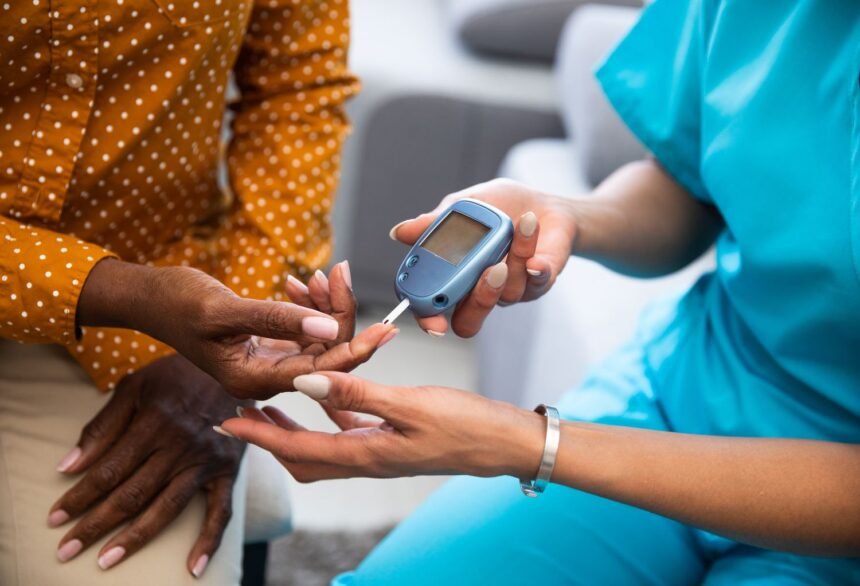World Diabetes Day
World Diabetes Day is celebrated every year on 14 November to raise awareness about diabetes, its prevention and management. It was created by the International Diabetes Federation (IDF) and the World Health Organization (WHO). The theme of World Diabetes Day 2023 is ‘Access to Diabetes Care’.
Diabetes is a long-term health condition that occurs when the body cannot effectively control blood sugar levels. There are two main types of diabetes: Type-1 and Type-2. Type 2 diabetes develops when the body becomes resistant to the effects of insulin, or when the pancreas does not produce enough insulin. It is often linked to lifestyle factors such as obesity, poor diet and lack of physical activity.
Both types of diabetes can lead to elevated blood sugar levels, which if uncontrolled can lead to serious health complications affecting various organs and systems. Certain foods may increase the risk of developing type-2 diabetes, especially when consumed in large amounts or as part of an unhealthy diet. Below we discuss how certain foods can increase your risk of diabetes.
Diabetes Day 2023: History and Significance
World Diabetes Day was established by the International Diabetes Foundation (IDF) in collaboration with the World Health Organization (WHO) in 1991. After the establishment, it was declared a global day in 2006 after the United Nations passed a resolution.
November 14, the birth anniversary of Sir Frederick Banting, who discovered insulin with Charles Best in 1922, was chosen as World Diabetes Day.
The day marks the significance of reaching the maximum number of people globally to promote a platform to cure diabetes and its treatment. A blue circle logo was initiated by the UN, in 2007, as a global symbol to create awareness regarding the condition and the community associated with it.
10 foods that are increasing the risk of diabetes:
1. Sugary beverages
Regular consumption of sweetened beverages like soda and fruit juice increases the risk of diabetes. Choose water, unsweetened tea or water mixed with pieces of fruit for a healthier option.
2. White bread and refined grains
Foods made from white flour and refined grains have a high glycemic index, causing a spike in blood sugar. Choose whole-grain options like brown rice, quinoa or whole-grain bread.
3. Processed meat
Bacon, sausage and deli meats often contain high levels of sodium and preservatives, which contribute to diabetes risk. Choose lean sources of protein like skinless chicken, fish or legumes.
4. French Fries and Potato Chips
These foods are usually fried in unhealthy oils and can significantly increase the risk of type-2 diabetes. Bake homemade sweet potato fries or choose air-popped popcorn as a healthy snack.
5. Sweet breakfast cereals
Most breakfast cereals are loaded with added sugars, which can spike blood sugar levels. Choose whole-grain cereals with no added sugar or oatmeal with fresh fruits and nuts.
6. Fried foods
Fried foods like fried chicken or fried snacks contribute to inflammation and insulin resistance. Instead, choose baked or grilled options to reduce your risk of diabetes.
7. High-fat dairy products
Full-fat dairy products contain saturated fat that may increase the risk of diabetes. Choose low-fat or non-fat dairy options such as skim milk, yogurt, or cottage cheese.
8. Foods rich in trans fats
Trans fats, which are often found in processed snacks, cookies and margarine, increase the risk of diabetes and heart disease. Look for trans fat-free options or choose healthier fats like olive oil or avocado.
9. Artificially Sweetened Beverages
Although they lack calories, artificial sweeteners may increase the risk of diabetes and impair blood sugar control. Choose sparkling water or herbal tea as healthier, no-sugar alternatives.
10. Sweets with high sugar content
Cakes, cookies and pastries are high in refined sugars and unhealthy fats, which contribute to diabetes risk. Choose homemade sweets using natural sweeteners like dates, maple syrup or fruits.
Remember, moderation is key, and maintaining a balanced diet with whole foods, lean proteins, and abundant fruits and vegetables is essential to reducing your risk of diabetes.





